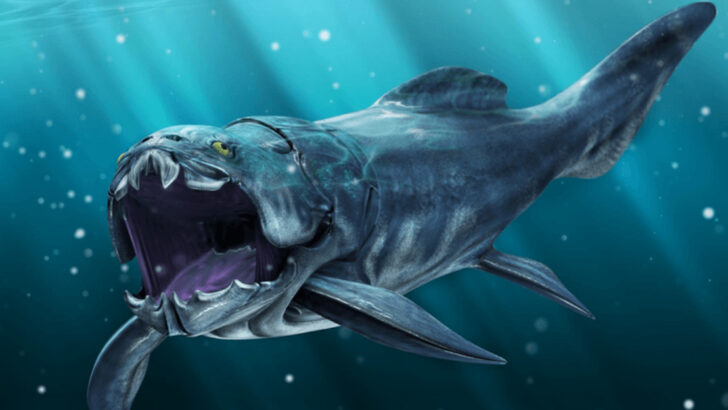When you think about prehistoric creatures, dinosaurs often take center stage, with their towering figures and fearsome reputations. But believe it or not, there were animals that roamed the Earth long before and after the dinosaurs that might actually send a bigger chill down your spine. From monstrous insects to sea creatures that could swallow an entire dinosaur whole, some of these ancient creatures were far more terrifying than you might expect.
What makes these animals even more fascinating is that they were real, and many of them lived in environments where survival was a brutal game of skill and strength. While dinosaurs might get the spotlight in movies and books, there were some creatures lurking in the shadows that were truly the stuff of nightmares. Here’s a look at 24 animals that were even scarier than the dinosaurs themselves—if you dare.
Megalodon
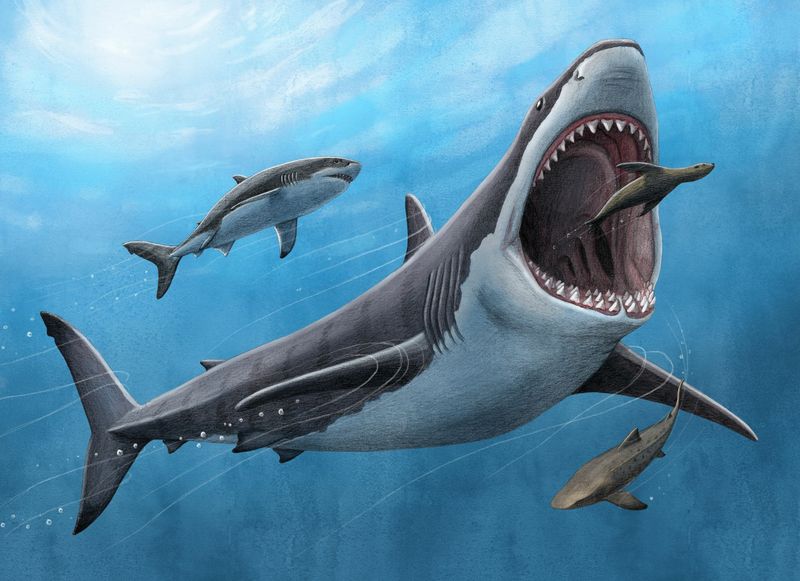
Megalodon was a colossal shark, dominating the oceans millions of years ago. Imagine a shark three times the size of a great white, with jaws powerful enough to crush a car. This apex predator ruled the seas, feeding on whales and other large marine creatures.
Its teeth, the size of a human hand, were perfect tools for hunting in the deep. With a bite force estimated to be 18 tons, the Megalodon was a fearsome sight.
Despite its terrifying nature, it played a crucial role in maintaining the marine ecosystem, keeping populations in balance.
Titanoboa
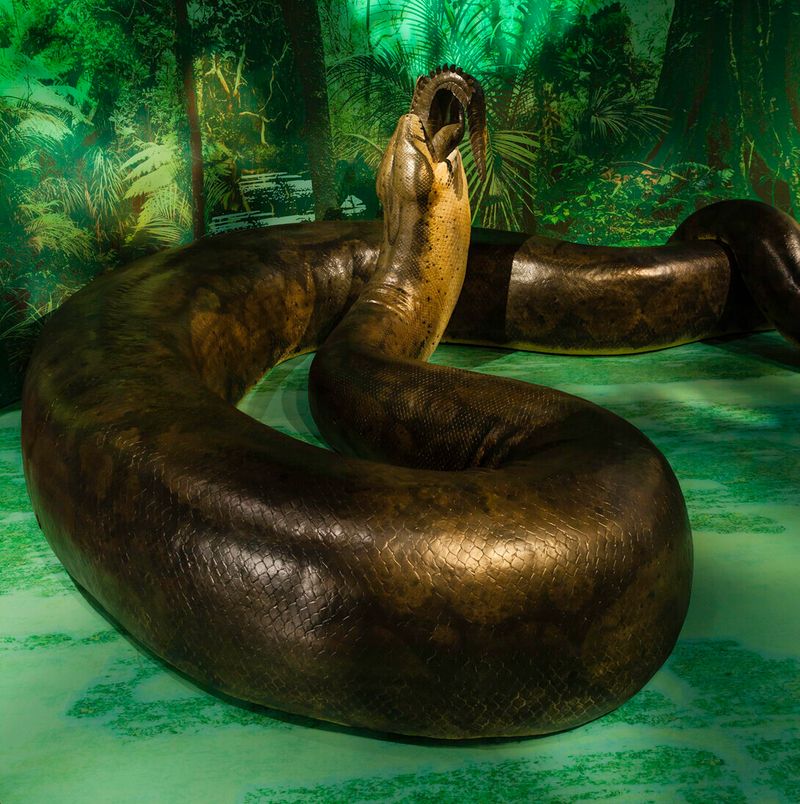
The Titanoboa was an enormous snake, stretching up to 40 feet in length and weighing over a ton. It lived in the humid jungles of South America during the Paleocene epoch.
This giant serpentine predator preyed on large reptiles and even crocodiles. Its sheer size allowed it to constrict and suffocate its prey with ease.
Imagine encountering such a creature in the swampy waters, silently gliding through its habitat. The Titanoboa’s existence speaks volumes about the unique and terrifying adaptations that evolved in the prehistoric world.
Sarcosuchus
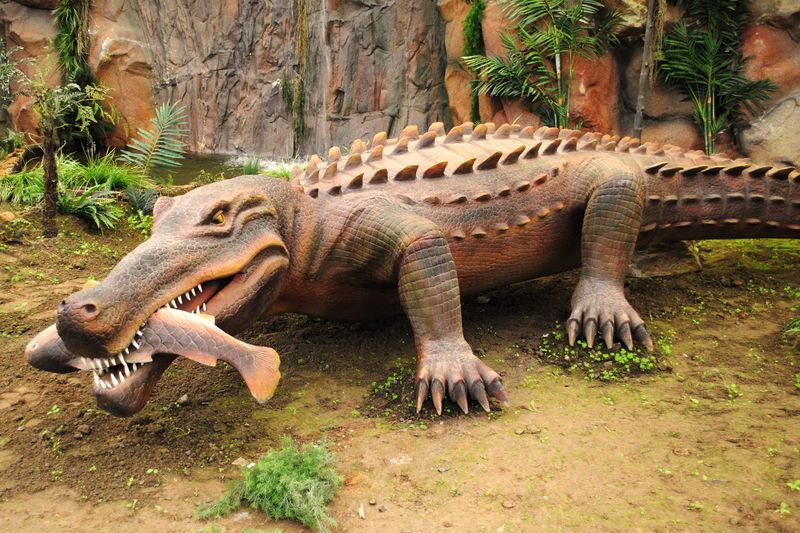
Sarcosuchus, also known as the “super croc,” was a giant relative of modern crocodiles. This enormous reptile spanned up to 40 feet and weighed around 8 tons.
Living primarily in riverine environments, it was a dominant ambush predator, feeding on dinosaurs and other large animals. Its long snout and strong jaws made it a formidable adversary.
Imagine the surprise of any unsuspecting prey wandering near its territory. The Sarcosuchus exemplified the power and adaptability of prehistoric reptiles, showcasing nature’s ability to create formidable predators.
Gorgonopsid
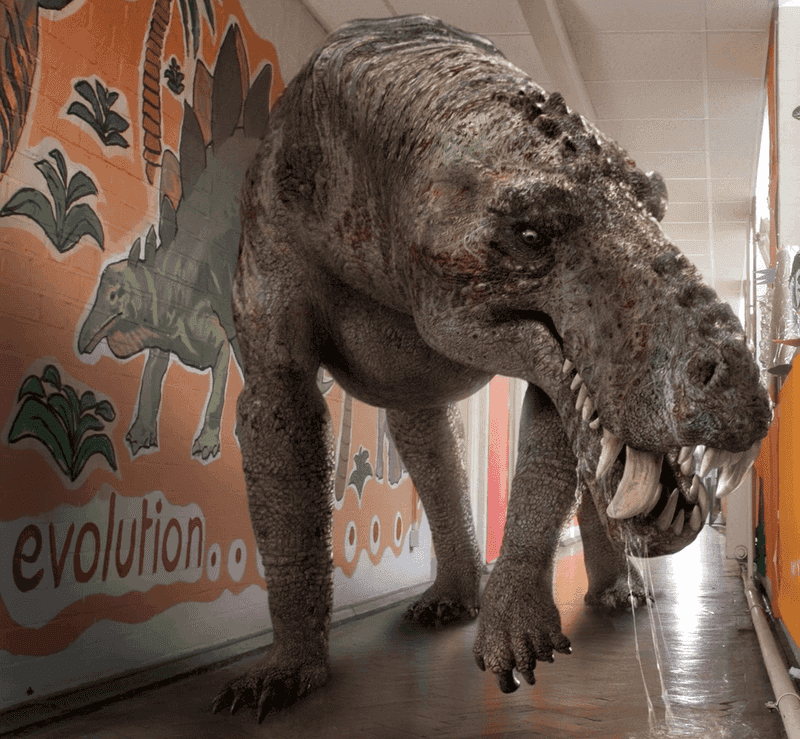
Gorgonopsids were fearsome predators that roamed the Earth during the late Permian period. These creatures, with their saber-like teeth, were among the top predators of their time.
Their powerful limbs and sharp claws made them efficient hunters. They could take down prey with precision and strength unparalleled in their era.
These synapsids were a crucial link in the evolutionary chain, bridging the gap between reptiles and mammals. The Gorgonopsid’s existence highlights the diverse and terrifying forms life has taken throughout history.
Anomalocaris
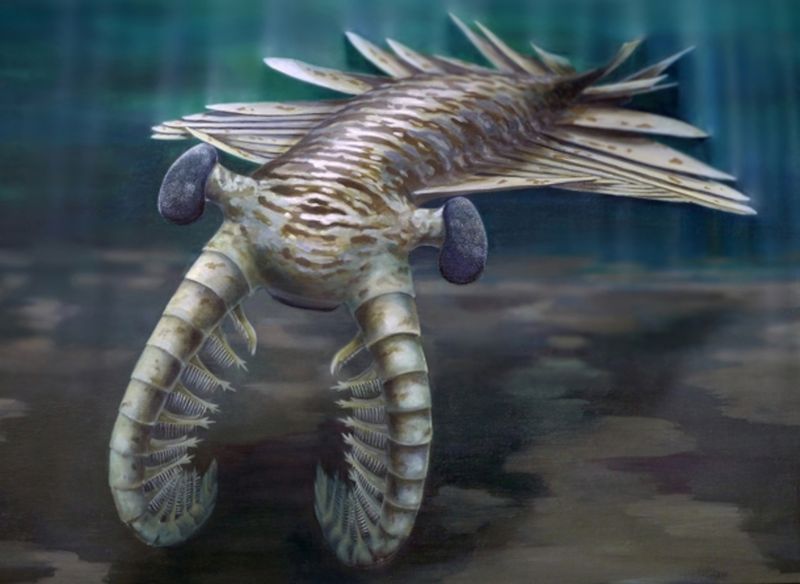
Anomalocaris was a strange and fearsome predator of the Cambrian seas. With its large eyes and spiked appendages, it was well-equipped for hunting its prey.
This creature, although not large by today’s standards, was a dominant force in its time. Its unique hunting strategy involved grabbing and crushing prey, showcasing the diversity of early marine life.
The Anomalocaris, with its alien-like appearance, was a key player in the Cambrian explosion, a period of rapid evolutionary development. Its presence reminds us of the countless bizarre and fearsome creatures that once thrived in our oceans.
Dunkleosteus
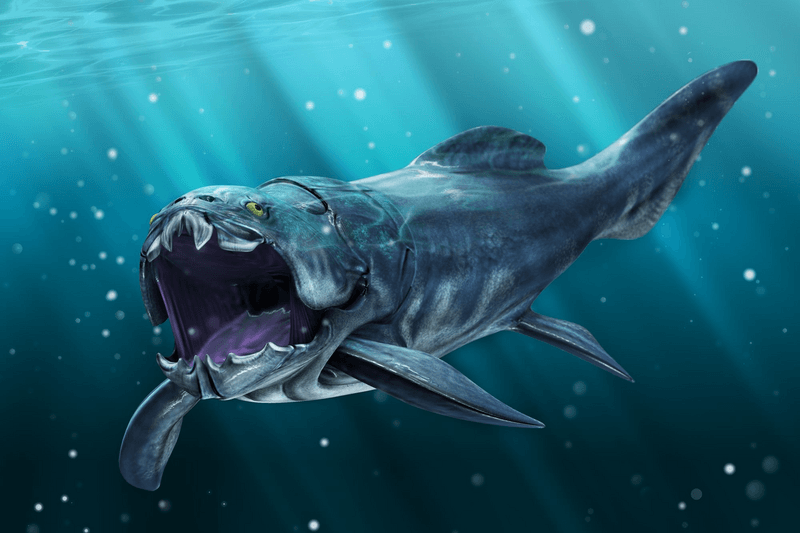
Dunkleosteus was a prehistoric armored fish, dominating the oceans during the Devonian period. This creature, with its massive bony jaw, could shear through flesh and bone.
Reaching lengths of up to 33 feet, Dunkleosteus was a top predator, asserting its dominance over other marine life. Its armored body provided protection against attacks.
Its fearsome appearance and powerful bite made it a force to be reckoned with. The Dunkleosteus exemplifies the formidable adaptations that evolved in marine environments, highlighting the ocean’s rich and terrifying history.
Helicoprion
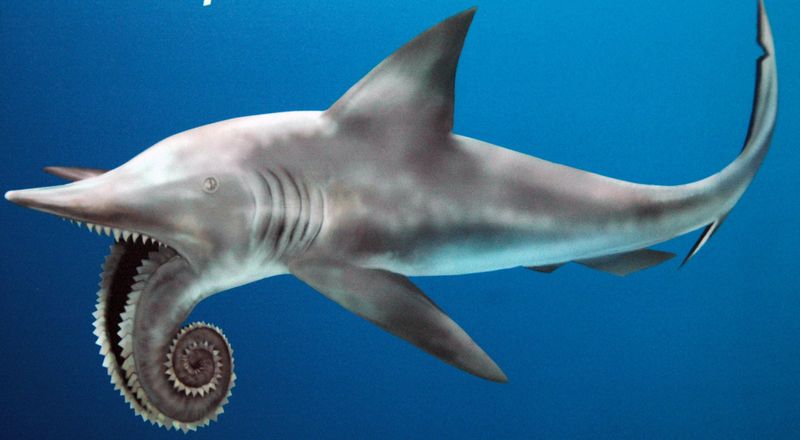
Helicoprion was a unique marine predator known for its spiral-shaped jaw, filled with razor-sharp teeth. This peculiar feature set it apart from other prehistoric creatures.
It roamed the ancient seas, using its spiral teeth to slice through prey with remarkable efficiency. The exact function of its jaw remains a topic of fascination and study.
Imagine encountering such an oddity in the ocean, its spiral jaw a testament to nature’s creativity. The Helicoprion exemplifies the diverse and often bizarre adaptations that occurred in the world’s ancient seas.
Platybelodon
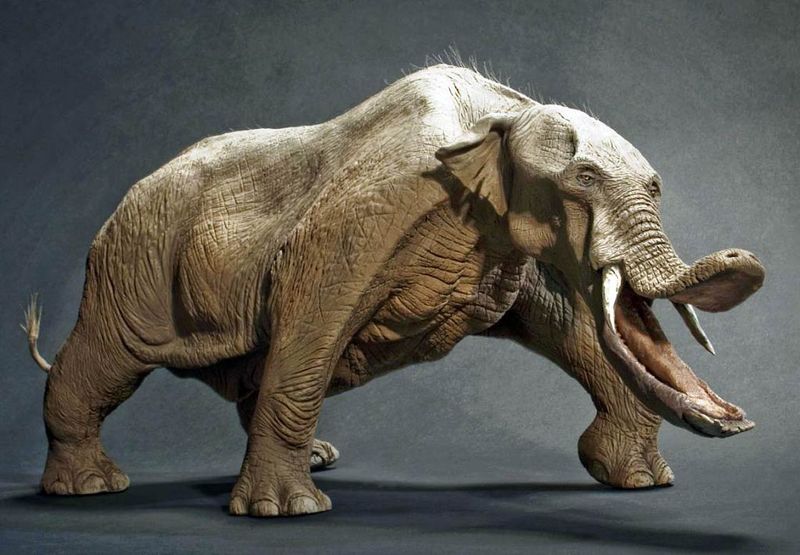
Platybelodon was a distant cousin of modern elephants, known for its distinctive, shovel-like lower jaw. This ancient herbivore roamed the Miocene landscapes.
Its unique jaw helped it scoop up aquatic vegetation, showcasing an evolutionary adaptation to its environment. The long, flat jaw also served as a tool for gathering food.
Despite its strange appearance, Platybelodon was well-suited to its habitat, thriving in various environments. It reminds us of the remarkable adaptations that have evolved to aid survival, even among herbivorous creatures.
Therizinosaurus
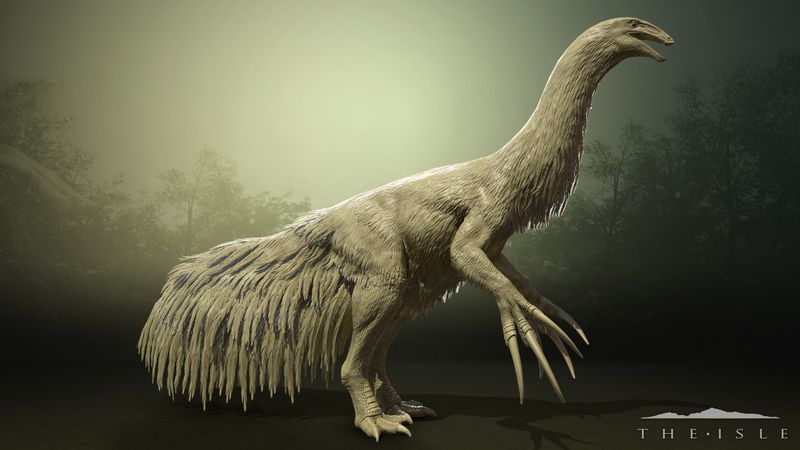
Therizinosaurus was a dinosaur with terrifying, scythe-like claws, reaching lengths of nearly three feet. This herbivorous dinosaur lived during the late Cretaceous period.
Its claws were likely used for defense and gathering vegetation, making it an unusual mix of fearsome and gentle. The dinosaur’s bird-like appearance added to its unique profile.
Therizinosaurus challenges our perceptions of dinosaurs, showcasing that size and claws don’t always mean carnivorous intent. Its adaptations speak to the diverse and surprising forms that prehistoric life could take.
Jaekelopterus
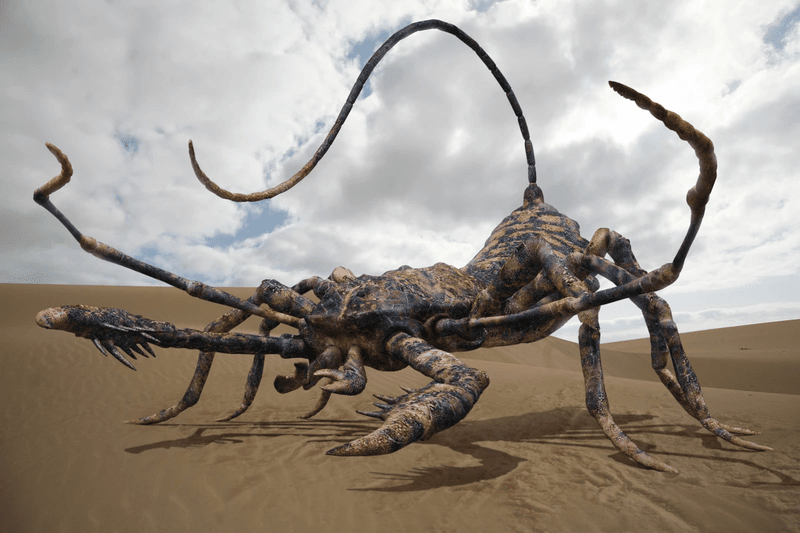
Jaekelopterus was a giant sea scorpion, one of the largest arthropods to have ever lived. It could grow up to 8 feet long, making it a dominant predator of the seas.
With its massive pincers, it hunted fish and other marine creatures, striking fear into anything smaller.
The existence of such a creature underscores the incredible diversity of life in prehistoric oceans, where invertebrates grew to massive sizes. Jaekelopterus showcases the unexpected and formidable adaptations in the evolutionary history of arthropods.
Megalania
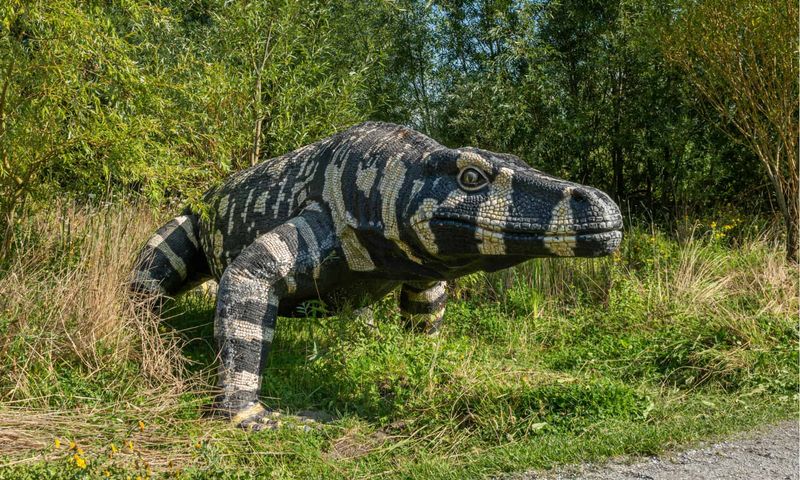
Megalania was a giant monitor lizard that roamed ancient Australia, growing up to 23 feet in length. It was the largest land-dwelling lizard known to have existed.
This formidable predator had a powerful bite, capable of taking down large mammals. Its hunting prowess was unmatched in its ecosystem.
Imagine coming face to face with such a creature in the wild, its presence a reminder of the diverse and massive reptiles that once dominated the land. Megalania was truly a testament to the incredible scale and adaptability of prehistoric reptiles.
Smilodon
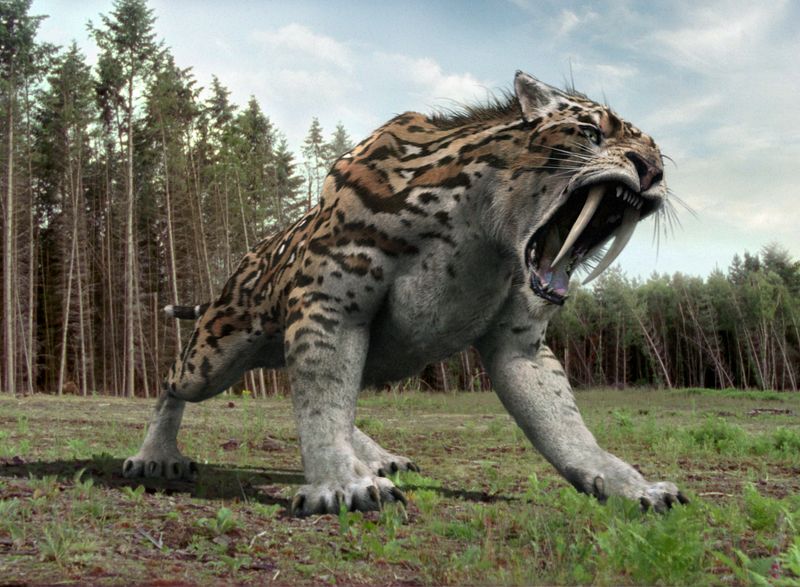
Smilodon, often known as the saber-toothed cat, was a powerful predator of the Pleistocene epoch. Its long, sharp canines were its defining feature.
Living among the megafauna of its time, Smilodon was a skilled hunter, preying on large herbivores with precision. Its muscular build and strong limbs aided in taking down substantial prey.
While it might seem familiar, encountering a Smilodon would undoubtedly be a spine-chilling experience. Its existence speaks to the varied and often intimidating forms life has taken to master their environments.
Spinosaurus
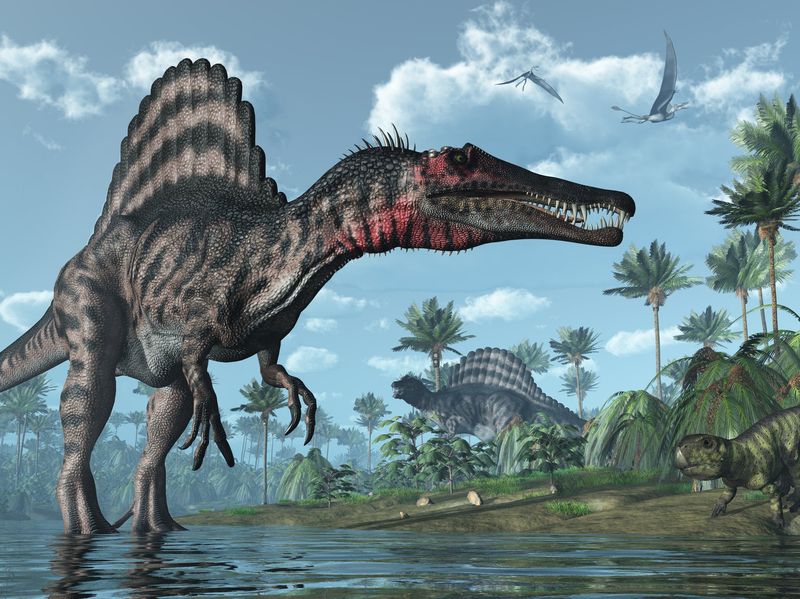
Spinosaurus was a massive predator, larger than Tyrannosaurus rex, with a distinctive sail on its back. This dinosaur lived during the Cretaceous period and primarily inhabited aquatic environments.
Its elongated snout and conical teeth were adapted for catching fish, making it a specialized predator of riverine ecosystems. Spinosaurus’ sail might have been used for display or thermoregulation.
The unique adaptations of Spinosaurus highlight the diversity of dinosaur life, showcasing that even familiar creatures like dinosaurs had surprising and terrifying variations.
Livyatan
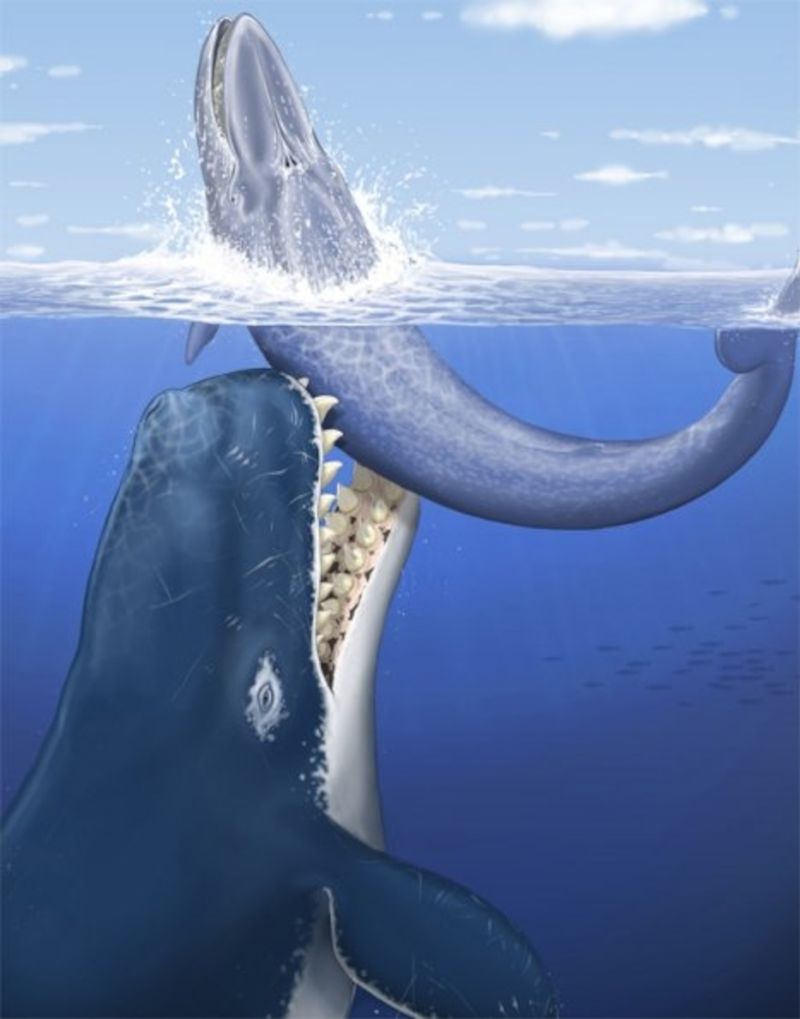
Livyatan was a gigantic prehistoric whale, known for its menacing teeth, which could grow over a foot long. This ancient cetacean roamed the Miocene seas, hunting large prey including other whales.
Its size and teeth were reminiscent of the mythical Leviathan, making it a formidable ocean predator. Livyatan’s powerful jaws and aggressive hunting strategies were unmatched in its time.
Imagine the challenge of surviving in the same waters as Livyatan, a creature that asserted its dominance with ease. It represents the diverse and often intimidating marine life that has existed throughout history.
Quetzalcoatlus
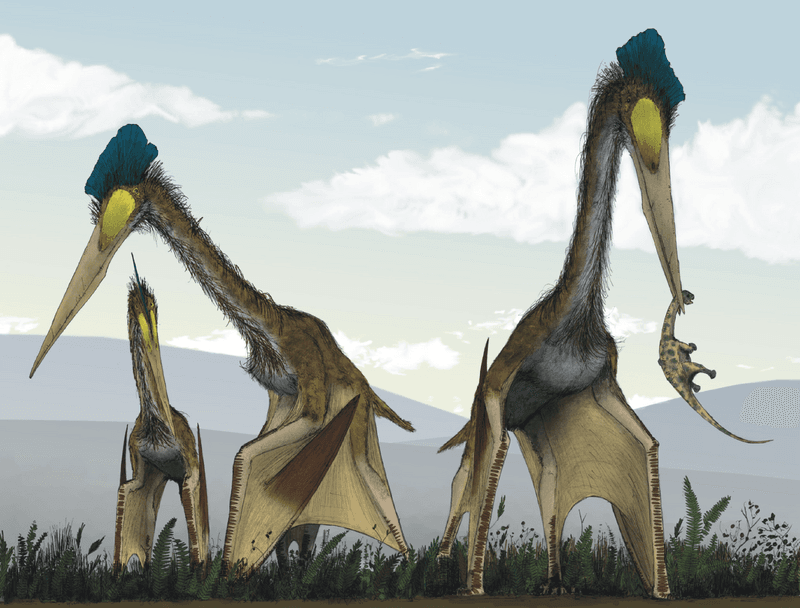
Quetzalcoatlus was one of the largest flying creatures to have ever existed, with a wingspan reaching up to 36 feet. This pterosaur lived during the late Cretaceous period.
Its long neck and beak allowed it to hunt for fish and small animals, dominating the skies with its massive presence.
Imagine laying eyes on such an enormous flying creature, its silhouette blocking out the sun. Quetzalcoatlus exemplifies the incredible scale and diversity of prehistoric life, showcasing the sky’s terrifying inhabitants.
Gigantopithecus
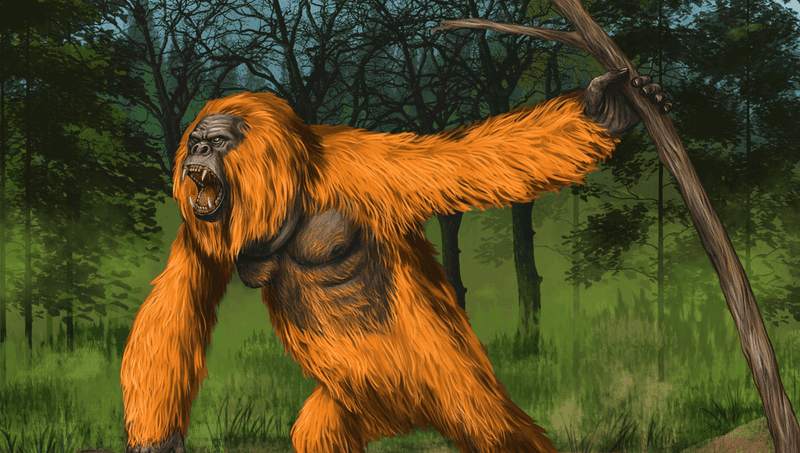
Gigantopithecus was a giant ape that lived in the forests of Southeast Asia during the Pleistocene. It stood over 10 feet tall and weighed up to 1,100 pounds.
This herbivorous primate used its enormous size to reach for high foliage and possibly intimidate rivals. Its existence challenges our perceptions of ancient primate life.
Picture encountering such a massive ape in the wild, a testament to the varied evolutionary paths taken by our distant relatives. Gigantopithecus was an incredible example of the unique and imposing forms life has assumed.
Arthropleura
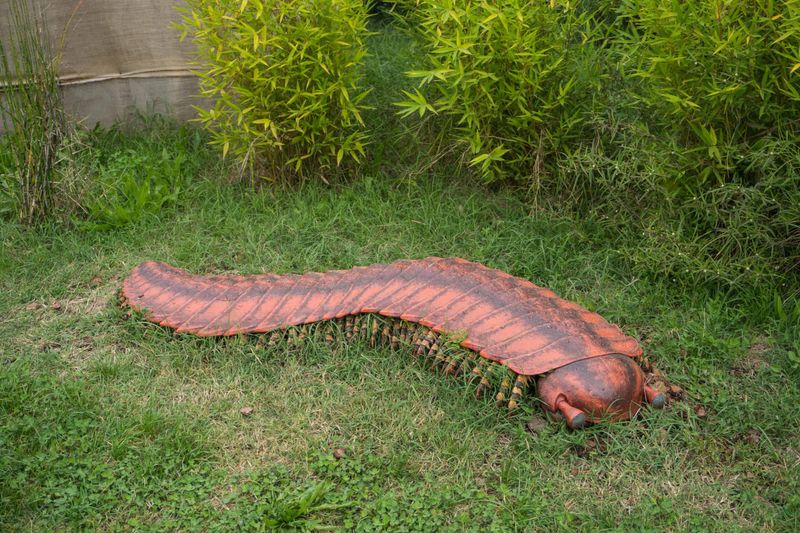
Arthropleura was a massive millipede-like arthropod that lived during the Carboniferous period. It could reach lengths of over 8 feet, making it the largest known land invertebrate.
This herbivorous creature roamed the lush forests, feeding on decaying plant matter and contributing to the ecosystem’s health.
The sheer size and presence of Arthropleura underscore the diverse and often astonishing adaptations of prehistoric life. It serves as a reminder of the fascinating scale at which life has existed, even among creatures we consider small today.
Mosasaurus
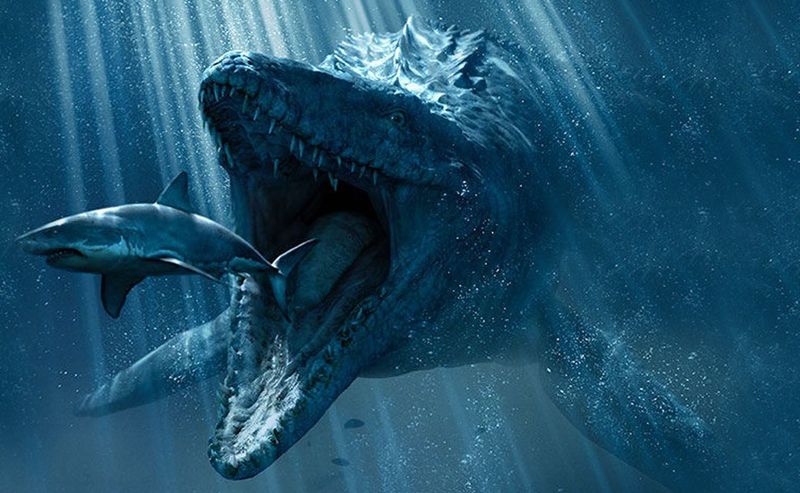
Mosasaurus was a formidable marine reptile, reaching lengths of up to 56 feet. It dominated the oceans during the late Cretaceous period, preying on fish, squid, and even other marine reptiles.
Its powerful jaws and streamlined body made it an efficient and fearsome hunter, striking swiftly underwater.
Encountering a Mosasaurus would have been a terrifying prospect, as it exemplified the fearsome nature of prehistoric marine predators. Its adaptations highlight the incredible diversity and scale of life that once thrived in ancient oceans.
Deinosuchus
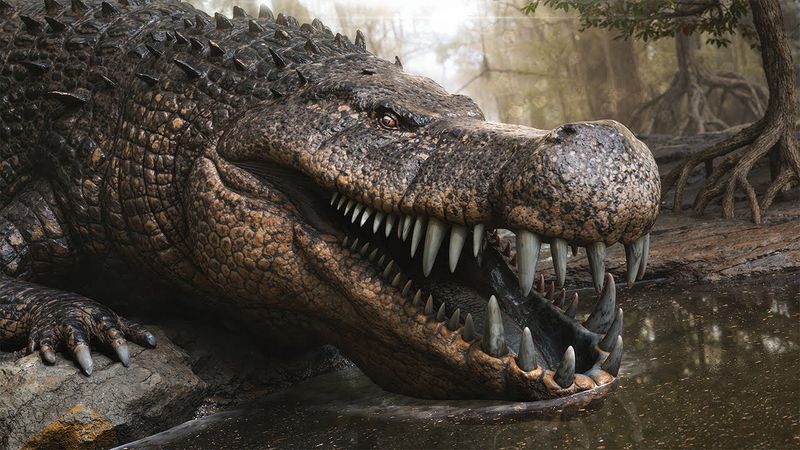
Deinosuchus was a colossal crocodilian, living during the late Cretaceous period. It was larger than today’s largest crocodiles, capable of reaching lengths of 40 feet.
With its massive jaws, Deinosuchus hunted dinosaurs and other large prey, asserting dominance in its swampy habitat.
Imagine the fear this creature instilled in the animals of its time. Deinosuchus’ existence is a testament to the terrifying and varied adaptations of prehistoric reptiles, showcasing how formidable life could become.
Meganeura
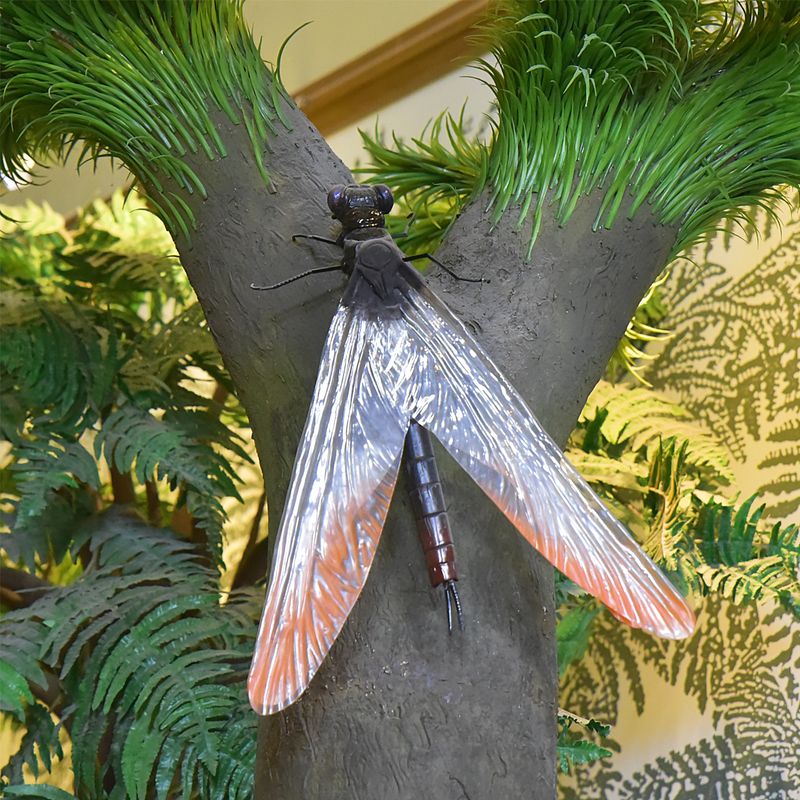
Meganeura was a giant predatory insect, similar to a dragonfly, boasting a wingspan of over two feet. It lived during the Carboniferous period, when oxygen levels were higher.
Its large size allowed it to dominate the skies, preying on smaller insects with ease. Its agile flight made it a skilled hunter.
Encountering Meganeura in flight would have been a sight to behold, its presence showcasing the incredible diversity and adaptations of ancient insects. It remains a fascinating example of the unique pathways evolution has taken.
Pliosaurus
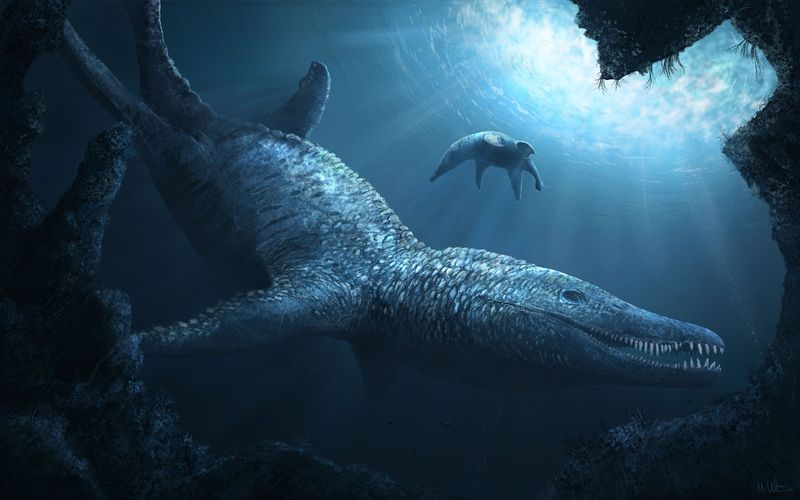
Pliosaurus was a gigantic marine predator, known for its enormous head and powerful flippers. It roamed the Jurassic oceans, hunting large prey, including other marine reptiles.
Its streamlined body and strong jaws made it a formidable hunter, capable of swift and powerful movements in the water.
The presence of such a creature in the ancient seas underscores the incredible scale and diversity of marine life. Pliosaurus exemplifies the fearsome nature and adaptations of prehistoric aquatic predators.
Entelodon
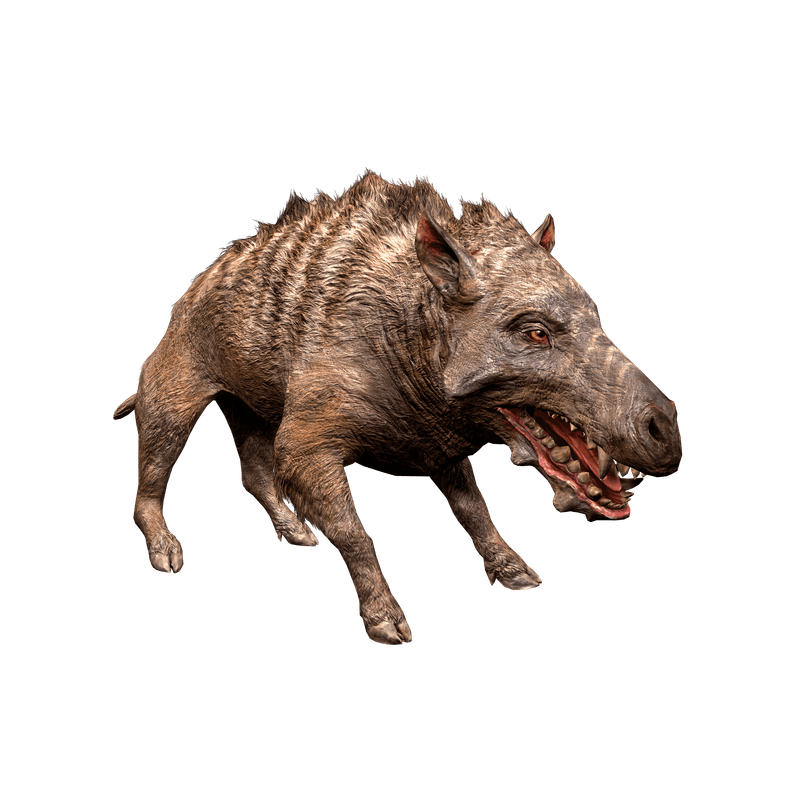
Entelodon, often referred to as “hell pig,” was a large, pig-like predator that lived during the Eocene and Oligocene epochs. Its robust build and long snout made it a formidable presence.
Despite its appearance, Entelodon was an omnivore, capable of hunting and scavenging. Its strong jaws and sharp teeth enabled it to consume a wide variety of food.
This creature’s existence highlights the surprising and diverse adaptations of prehistoric mammals, showcasing the unexpected forms that ancient life could take.
Hallucigenia
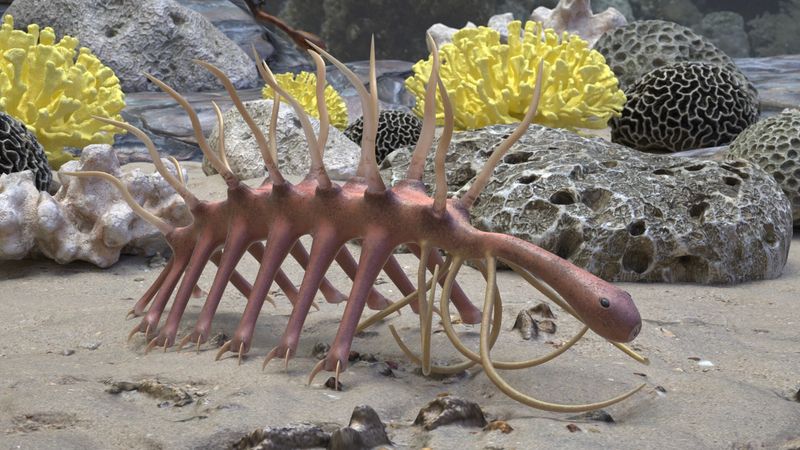
Meet Hallucigenia, a creature so bizarre that scientists initially couldn’t decide which side was up. Hailing from the Cambrian period, it sported long spines on its back and multiple leg-like appendages, giving it an alien-like appearance. These spines were more than just decorative; they served as a formidable defense mechanism against predators.
Its odd anatomy left scientists puzzled for years. Although it was small, Hallucigenia’s appearance was enough to make it a nightmare for any creature of its time. Imagine stumbling upon this spiky enigma in the depths of a Cambrian sea!
Tullimonstrum
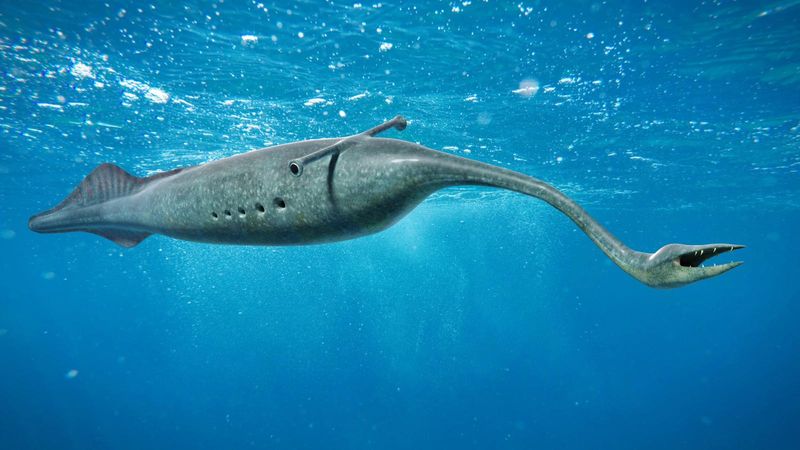
Enter the Tullimonstrum, often referred to as the Tully Monster. This peculiar creature roamed the murky waters of what is now Illinois over 300 million years ago. It had a torpedo-shaped body, stalked eyes, and a long, claw-tipped proboscis, making it look like something out of a science fiction novel.
Despite its small size, the Tully Monster’s unusual appearance and unclear classification have baffled scientists. It remains one of the most mysterious creatures to have ever existed, and its unique features gave it an edge in the competitive prehistoric waters.

